- News
- Reviews
- Bikes
- Accessories
- Accessories - misc
- Computer mounts
- Bags
- Bar ends
- Bike bags & cases
- Bottle cages
- Bottles
- Cameras
- Car racks
- Child seats
- Computers
- Glasses
- GPS units
- Helmets
- Lights - front
- Lights - rear
- Lights - sets
- Locks
- Mirrors
- Mudguards
- Racks
- Pumps & CO2 inflators
- Puncture kits
- Reflectives
- Smart watches
- Stands and racks
- Trailers
- Clothing
- Components
- Bar tape & grips
- Bottom brackets
- Brake & gear cables
- Brake & STI levers
- Brake pads & spares
- Brakes
- Cassettes & freewheels
- Chains
- Chainsets & chainrings
- Derailleurs - front
- Derailleurs - rear
- Forks
- Gear levers & shifters
- Groupsets
- Handlebars & extensions
- Headsets
- Hubs
- Inner tubes
- Pedals
- Quick releases & skewers
- Saddles
- Seatposts
- Stems
- Wheels
- Tyres
- Health, fitness and nutrition
- Tools and workshop
- Miscellaneous
- Buyers Guides
- Features
- Forum
- Recommends
- Podcast
feature
10 of Shimano and Campagnolo's worst ideas
The Big Two in cycling components, Campagnolo and Shimano, have delivered us lots of great bike parts over the years. But now and then it all goes horribly wrong. Let’s take a look at some of their worst blunders.
Shimano HollowTech II cranksets: might split in two
The most recent failure on Shimano’s part came with its HollowTech 2 cranksets. As the name suggests, these cranks are hollow inside, with two alloy pieces being bonded together. The theory is sound, and to be fair to Shimano, many people have experienced zero issues. But when they failed, they really went in dramatic fashion.
The cause for these issues seems to be water ingress. It would work its way in through the hollow axle, get busy causing some corrosion in the bond structure and that’s when you’d find your crankset in two pieces.
With its new 12-speed groupsets, Shimano says that the issue has been resolved, and was quite adamant that there was never an issue in the first place for many years... but finally, in September 2023, Shimano announced a voluntary inspection and replacement recall notice for 760,000 Dura-Ace and Ultegra bonded 11-speed road cranksets, after thousands of snapping incidents worldwide and what seemed like as many emails sent to us as part of our own internal investigation into the creaky cranks.
> Check your cranks! Shimano finally recalls 11-speed road cranksets after more than 4,500 incidents
Campagnolo Delta brakes: looked great, worked indifferently, weighed lots
Widely considered one of the most beautiful bike parts ever made, these centre-pull brakes undeniably looked stunning. Unfortunately, that’s about where their good qualities ended.
On paper, the idea was good: a centre-pull brake with the mechanism — a parallelogram of levers and pivots — hidden from the world by an aluminium cover. The Delta was part of perhaps the best-looking Campagnolo group ever made, 1986’s C-Record and the brakes were the jewel in the group’s crown, with meticulous polishing even in places where nobody would ever look.
The first version was recalled because, depending on who you believe, the pads could fail from over-heating on long descents or the cable clamp could fail, leaving you with no braking at all.
Subsequent versions solved that problem, but still didn’t stop mechanics complaining that the Deltas were hard to work on. The cable had to be long enough to reach the clamp, but no longer as there was nowhere for excess cable to go.
The cable clamp used a 3.5mm hex key, a size you won’t find in many off-the-peg tool sets. Campagnolo included one with the brake, but if you lost it a replacement was hard to find, especially in 1980s America, where Imperial units still reigned supreme. The last incarnations used a 4mm hex bolt instead.
This didn’t solve what some engineers saw as the brake’s fundamental flaw, that the mechanism inherently provided inconsistent braking power and as the pads wore you could end up with no braking at all.
Jobst Brandt, author of ‘The Bicycle Wheel’ was a trenchant critic of the Delta brakes. Brandt had worked on brake design for Porsche and observed that “variable ratio brakes [are] known to be useless … It should be mechanically obvious that a regular-parallelogram when at extreme extended position (cable fully extended) has zero mechanical advantage and at the other extreme (the cable corners together) has an infinite mechanical advantage. This is not a logical range in which to operate a brake, nor is even a part of that range.
“Such a characteristic is unconscionable for any brake manufacturer to offer as a brake, and even more so for one who sponsors racers who descend mountain roads or ride criteriums.”
They were also the heaviest brakes Campagnolo ever made, at 480g/pr. For comparison, a pair of 1981 Super Record brakes weighed 334g/pr, while a 2010 Super Record D Skeleton pair weighs 276g, almost half the Delta’s heft.
Despite all this, the Deltas’ sheer beauty makes them some of the most sought-after bike parts ever made. Prices of around $700/pr for a set in mint condition aren’t unusual, and many owners seem to still be perfectly happy with them.
I’ve only been able to skim the surface of the Delta story here. If you want to know more, take a look at this Italian article on them, with material gleaned from magazines and catalogues of the era; Retrogrouch’s article on the Deltas; Campagnolo fan site CampyOnly’s road test; and an amazing complete strip-down at Bikehugger that shows just how fiddly the internals were and will probably give nightmares to any mechanic who’s never encountered Deltas.
Shimano Dyna-drive pedals: great cornering shame about the bearings
The lower the rider, the better a bike corners. That was the idea behind these novel pedals which dispensed with a conventional axle so the foot — and therefore the rider — could be moved a couple of centimetres down.
Instead of bearings at each end of the axle, Shimano moved them into an over-sized pedal thread, an inch in diameter rather than the standard 9/16in. That meant you needed a crank with a larger pedal eye, and Shimano made those too.
Unfortunately the design put unusual loads on the bearings which reportedly didn’t last long as a result. The pedals were of course incompatible with any other cranks and at the time Shimano wasn’t big enough to have a new standard adopted by the rest of the industry. Even now it’s hard to imagine even Shimano forcing through a change to the pedal mount — it’s the last true standard in bike parts.
Campagnolo Power Torque cranks: once fitted, never removed
With over-sized axles and outboard bearings, modern chainsets are lighter and stiffer than old-style set-ups where the cranks bolted to a square-taper axle. As Shimano and others switched to two-part cranks, Campagnolo stuck with square taper for its cheaper models, while attaching a half-axle to each crank in its high-end Ultra-Torque system.
In 2011 Campagnolo introduced Power Torque. Like other two-part crank systems it has the axle permanently attached to one crank while the other is mounted on splines and held in place with a bolt (which requires a hulking great 14mm hex key; not hard to find, but not likely to be part of any mechanic’s existing tool kit). However, unlike the pinch bolts on Shimano’s two-piece cranks, or the self-extracting crank bolts on other designs, there’s no built-in way to get a Power Torque crank off the axle once it’s tight.
This, mechanics howled when they first had to take off a Power Torque crank, is bonkers. Then they nipped down their nearest tool shop for a mechanical puller so they could yank the crank off the axle and found that had to be carefully ground to fit behind the crank.
Five years later Campagnolo’s technical manual for Power Torque cranks still offered only a tiny hint as to how you were supposed to remove a Power Torque crank — a "type Beta/Usag extractor" is mentioned, but not which model (there are dozens) or how it should be used to avoid causing damage.
Tool makers like Park Tool and Cyclus have stepped up and made pullers to remove Power Torque cranks but it’s mystifying that Campagnolo itself hasn’t come up with a beautiful but insanely expensive tool for the job. After all, they do make a £190 chain tool and a £180 corkscrew.
Shimano Biopace chainrings: wobbliness to no avail
When Shimano launched this ill-fated mid-1980s attempt at popularising elliptical chainrings it released a paper on the idea via Bike Tech, a newsletter from the people who publish Bicycling magazine in the US. In summary, the paper goes: “Sensible argument, sensible argument, sensible argument, HUGE ASSUMPTION, sensible argument, sensible argument.”
The assumption was about the orientation of the long axis of the ellipse, which Shimano decided should be at roughly 90 degrees to the orientation of every elliptical chainring before or since.
This meant the gear effectively dropped through the power stroke, which felt weird but you got used to it. However, there were reports that for some riders it caused knee problems and at a time when Shimano’s target users, mountain bikers, were looking for ever-lower gears Biopace’s limitation of a 28-tooth inner ring was a serious flaw.
There was never any evidence that Biopace was more or less physiologically efficient than round rings. In the early ’90s Shimano quietly dropped it. The company had moved its attention to better gear shifting and had come up with chainrings that incorporated shaped teeth and ramps like its Hyperglide rear sprockets. These didn’t work with Biopace, which gave Shimano a face-saving way to drop it, though by this point enthusiast riders had switched back to round rings anyway.
Campagnolo Super Record titanium bottom bracket: saved weight, broke
Replacing steel with titanium has long been popular way for bike component makers to save weight. There are plenty of sub-components where this works really well: cable clamp bolts, adjusting screws, even rear derailleur mounting bolts are loaded lightly enough that it doesn’t matter that the titanium part isn’t as strong as the steel part it replaces.
You’re probably thinking “Hang on, titanium has a better strength-to-weight ratio than steel.” That’s broadly true, but titanium is less dense than steel, so to get an equally strong part you need more of it. If a component can’t be made bigger, the titanium version will be weaker or less durable.
That was the problem with the Super Record titanium bottom bracket that Campagnolo introduced in the late ’70s. When it failed, it failed at the square taper, leaving a bit in the crank and bit sticking out of the bottom bracket bearings. In the 1982 Giro d'Italia, race leader Laurent Fignon had a bad crash thanks to a broken Super Record axle, sending Campagnolo back to the drawing board.
Version two solved the problem by holding the crank arm in place with a nut instead of a bolt so there was no thread inside the axle to provide a weakening stress riser.
Bad ideas never die for long in cycling. The drive to lighten mountain bikes in the early ’90s led to some very dodgy substitutions of titanium and even aluminium for steel. The bottom bracket was a target, being a big lump of steel, and failure-prone titanium axles again put riders on the deck. One solution proposed by Keith Bontrager was to use a 7mm bolt to hold the crank in place instead of 8mm. That meant the axle would be thicker and more durable. This was available as the Axiom titanium bottom bracket in about 1996.
The whole issue was made moot by the development of splined, hollow bottom bracket axles and then two-piece cranks with even larger axles.
Shimano SPD-R pedals: you can clip in but you can never leave
While Look was creating and then dominating the road bike clipless pedal category, Shimano saw an opportunity in the booming mountain bike arena. Instead of a big plastic cleat that stood proud of the sole, Shimano tucked a small steel cleat into a recess in the sole so you could walk in the shoes.
It was a runaway success first among mountain bikers and then touring and commuting riders who liked the security of being clipped in, but wanted to be able to walk when off the bike.
Shimano made several attempts to crack the road bike clipless market with designs that included a single-sided pedal that used the same two-bolt cleat design as the mountain bike pedals. The tiny cleat didn’t work for road cyclists who complained it allowed the shoe to rock on the pedal; there were even reports of powerful riders managing to twist the cleat out of the sole.
Shimano’s next attempt was even worse. The SPD-R pedal had two bolts on the centre line of the sole, so it required shoemakers to retool to accommodate it. Aside from Shimano few did so your shoe options were severely limited. It was hard to get out of SPD-R pedals, making them the Hotel California of clipless pedals: you could clip in, but you could never leave. The cleat was still relatively small compared to a Look cleat so your shoe was still not as stable on the pedal.
To be fair, one group of riders loved SPD-R: track racers. The difficulty of exit appealed to riders for whom an accidental pedal release was a disaster and over a decade after they were discontinued, they were still a cult item among trackies.
Shimano eventually gave trying to go its own way and produced the SPD-SL in 2002. It fit the same three-bolt mounting as Look and allegedly finally weaned Lance Armstrong off the long-discontinued late 80s Shimano/Look pedals he’d been using for 15 years.
Campagnolo SGR pedals: never mind the weight, feel the ratchet
In the 80s and 90s every component maker had a go at coming up with its own clipless pedal design. Some were more successful than others, and Campagnolo’s 1987 SGR pedals were definitely one of the others.
The cleats slid into enclosures on the pedal. If the cleats or the this enclosure were dirty, you couldn’t engage the pedal. If you walked in the cleats, they developed a burr and you couldn’t engage the pedal.
To clip in, the pedal had to be orientated with the enclosures up. It didn’t naturally hang that way and the toe-catch-flip action used with Look pedals didn’t work, so Campagnolo built in a ratchet that stopped the pedal rotating till you were clipped in. When this ratchet wore out, clipping in became tricky, to say the least.
You could adjust cleat angle and float with screws in the pedal. However, if you didn’t snug these screws into place they fell out.
Like Delta brakes, SGR pedals were a product of a ‘never mind the weight look at the shiny’ design regime at Campagnolo that culminated in 1989’s boat-anchor Euclid mountain bike components. By the mid-90s Campagnolo had remembered cyclists didn’t want to lug round unnecessary mass and dusted off the scales, but in the meantime the SGRs were about the heaviest clipless pedals ever made, and had so much steel in the internal mechanisms there was no way to lighten them.
Campagnolo subsequently sold a rebranded Look pedal, and then developed the Pro-Fit pedal which can still be found in some retailers though Campagnolo no longer seems to list it.
Shimano Sora brake/shift levers: beginners don’t need to shift from the drops
One of the most significant advances in the bike’s user interface in the last few decades was Shimano’s STI combined brake and gear lever design. With STI you never need to take your hands off the bars to change gears. In fact, it’s hard to imagine the road bike boom of the last decade or so without STI. Can you imagine the carnage in sportives as hundreds of us malco MAMILs fumble for down tube shifters?
But the mechanism of the classic STI design, with a pivoting brake lever and a second lever right behind it, is expensive to make. To make a cheaper version for the entry-level Sora group, Shimano moved one of the levers to the body and made it so small it was more like a button than a lever.
The problem was, the buttons could only be reached from the lever hoods. If you were in the drops going downhill, you couldn’t shift up the rear gears, which was a bit of a pain.
Almost every review of a Sora-equipped bike complained about this. As Dave Atkinson wrote when he reviewed the revamped Sora 3500 group in late 2013: “The old Sora lever featured the much-maligned Shimano thumb lever and a massive throw to change gear. They weren't great, and these are masses better.”
To its credit, Shimano has now entirely dropped shift buttons from its road component range; even the eight-speed Claris group has proper STI levers with full-size levers for both shift directions.
Shimano Dual Control MTB brake/shift levers: making flippy-flappy
Here’s an added extra for the mountain bikers among you.
After great success with STI Dual Control road bike levers, Shimano tried to take the concept off road in 2003 and 2004 with these levers in which the brake lever did everything. Pull it toward you to brake, push it down or up to change gear.
Mountain bikers were sceptical about the idea until they tried it; then they usually became downright hostile.
The practical problem was that it was hard to shift and brake at the same time because if you were pulling a lever toward yourself it was almost impossible to move it up or down.
One quirk of mountain bike Dual Control that impeded acceptance was that the rear derailleur worked the wrong way. Pulling the cable moved it from larger to smaller sprockets, while the spring did the work to go to larger sprockets, feature Shimano called Rapid-Rise or ‘low normal’.
For anyone who’d been riding for a long time, this was hard to get used to. In a review of a Dual Control-equipped Klein Palomino I wrote at the time: “Re-educating reflexes conditioned by almost 20 years of mountain biking was a slow and sometimes painful process as I repeatedly went up a gear instead of down. The problem wasn't that I had to push the brake lever up and down — I soon stopped groping for non-existent triggers — but that the tactile feedback wasn't what I was used to. On every other bike I own, pushing against derailleur spring resistance gives a shift to larger sprockets. With the Palomino's low normal set-up, resistance equals smaller sprockets. I struggled to adapt.”
I wasn’t the only one, but a bigger problem for Shimano was that the company’s near-monopoly on mountain bike components was breaking down, and locking together the shifting and braking systems with Dual Control looked like a desperate rearguard action to preserve it. Bike makers wanted to fit brakes from other companies alongside Shimano transmissions. Dual Control made that impossible.
Shimano quickly retreated, offering separate shifters again so bike makers could cook up their own choices of brake and gear systems.
Are these the biggest Shimano and Campag howlers of all time, or can you think of more? Let us know in the comments as always
John has been writing about bikes and cycling for over 30 years since discovering that people were mug enough to pay him for it rather than expecting him to do an honest day's work.
He was heavily involved in the mountain bike boom of the late 1980s as a racer, team manager and race promoter, and that led to writing for Mountain Biking UK magazine shortly after its inception. He got the gig by phoning up the editor and telling him the magazine was rubbish and he could do better. Rather than telling him to get lost, MBUK editor Tym Manley called John’s bluff and the rest is history.
Since then he has worked on MTB Pro magazine and was editor of Maximum Mountain Bike and Australian Mountain Bike magazines, before switching to the web in 2000 to work for CyclingNews.com. Along with road.cc founder Tony Farrelly, John was on the launch team for BikeRadar.com and subsequently became editor in chief of Future Publishing’s group of cycling magazines and websites, including Cycling Plus, MBUK, What Mountain Bike and Procycling.
John has also written for Cyclist magazine, edited the BikeMagic website and was founding editor of TotalWomensCycling.com before handing over to someone far more representative of the site's main audience.
He joined road.cc in 2013. He lives in Cambridge where the lack of hills is more than made up for by the headwinds.
Latest Comments
- chrisonabike 27 sec ago
The relatives might of course disagree, but in general I'd countenance a relatively light sentence* if only we could fix it so that those who...
- ktache 39 min 47 sec ago
Id forgotten that I got a second hand set of project two's for my getting to work bike over twenty years back.
- eburtthebike 1 hour 4 min ago
I listened to the BBC R4 prog "Should cyclists stay in their lane" and it was pretty much what you'd expect from the BBC, a well-informed cyclist...
- eburtthebike 1 hour 22 min ago
Of course you don't actually want to spend money intended for infrastructure on infrastructure, you want to spend it on plans for infrastructure,...
- Veganpotter 1 hour 36 min ago
My bet is that all these tires popping off are from people with bad pressure gauges or they're simply just putting too much air in on purpose. ...
- Hirsute 1 hour 59 min ago
You have to add images via a reply to yourself after the topic is created. One at a time too.
- Hirsute 2 hours 1 min ago
“Plus, riders who pair CarBack to their smartphone using the Trek Accessory app can enjoy even more features, including the ability to see the...
- chrisonabike 2 hours 52 min ago
David9694 - you were right! These new autonomous vehicles really are conspiring to run out of control!...
- HoarseMann 3 hours 23 min ago
Decathlon have the Garmin Varia RTL515 on offer at the moment for £129.99: https://www.decathlon.co.uk/p/rearview-radar-varia-rtl515-65-lumens/_/R-...
- Rendel Harris 4 hours 34 min ago
So when you said "all Jews" you didn't actually mean all Jews, just religious ones. However even that distinction is erroneous, as you must surely...


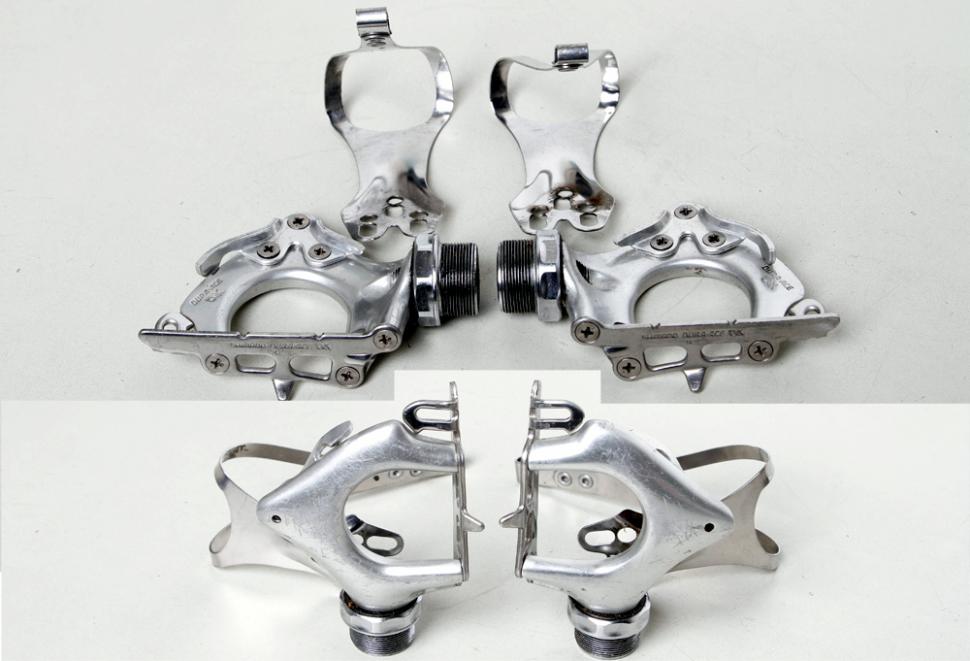

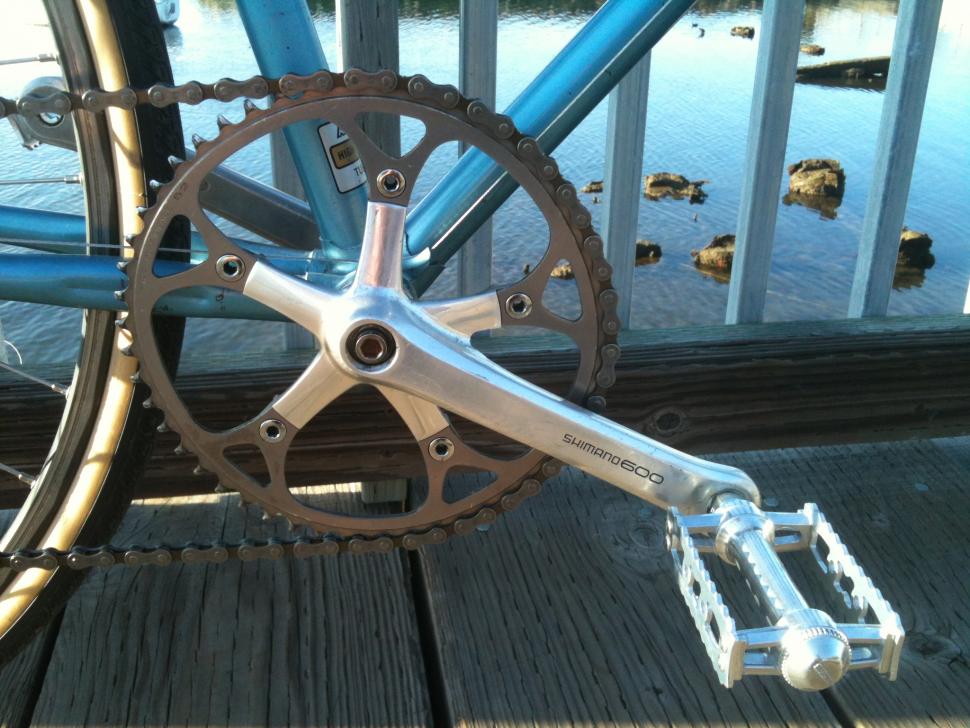
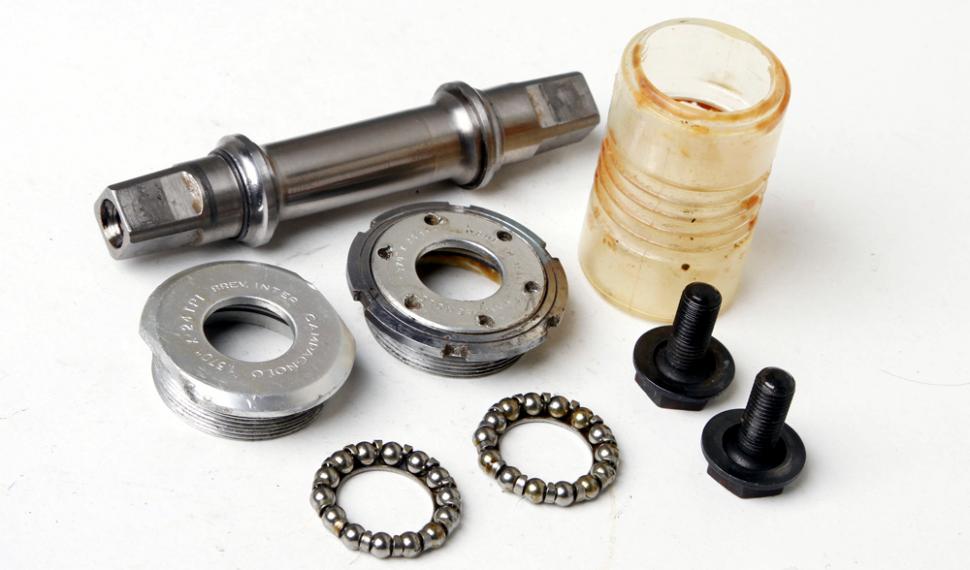
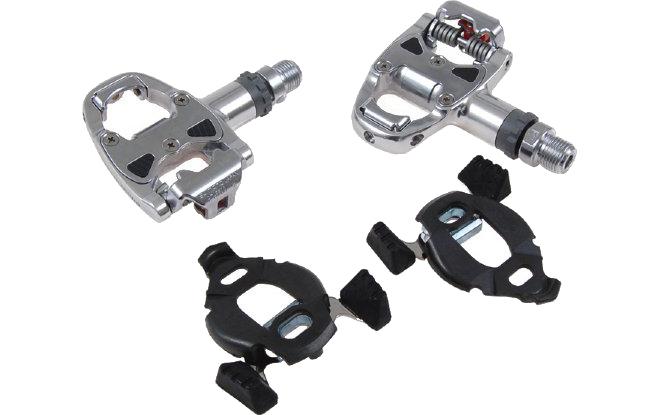
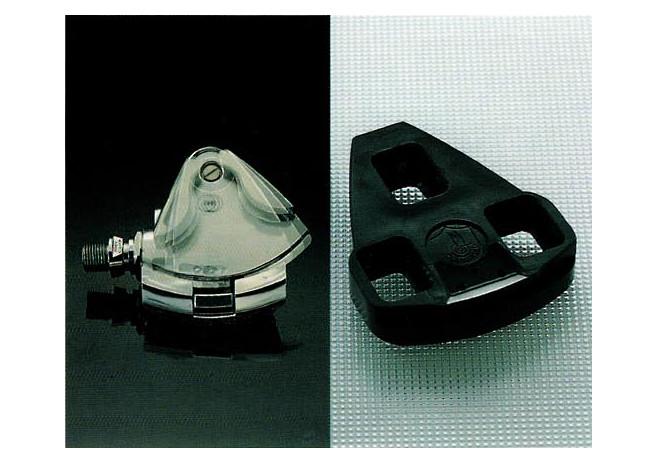
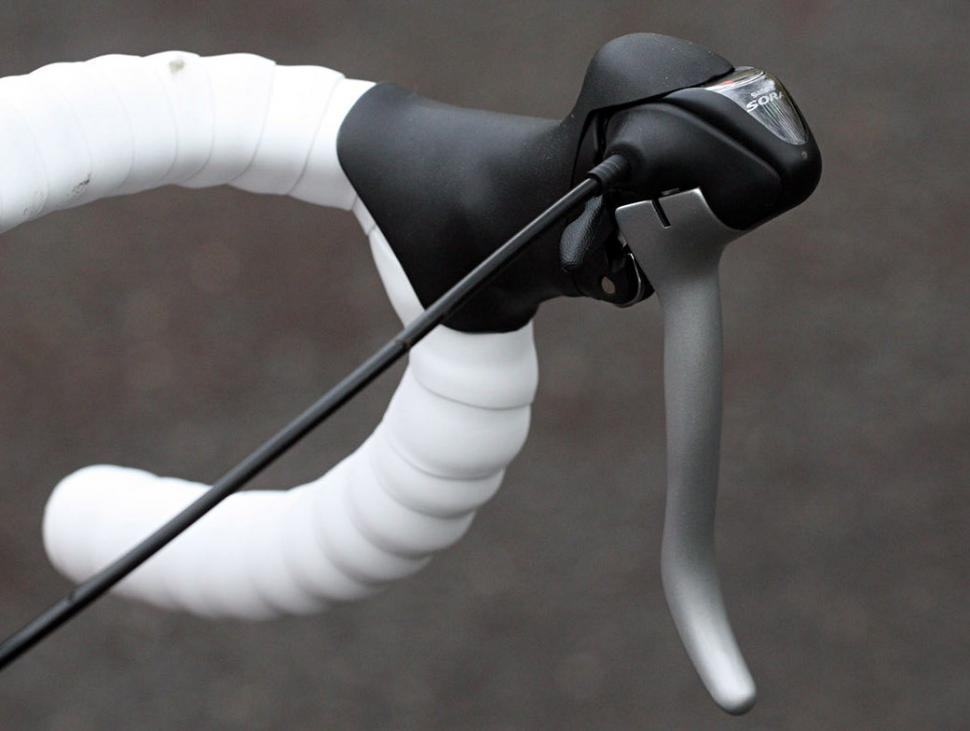
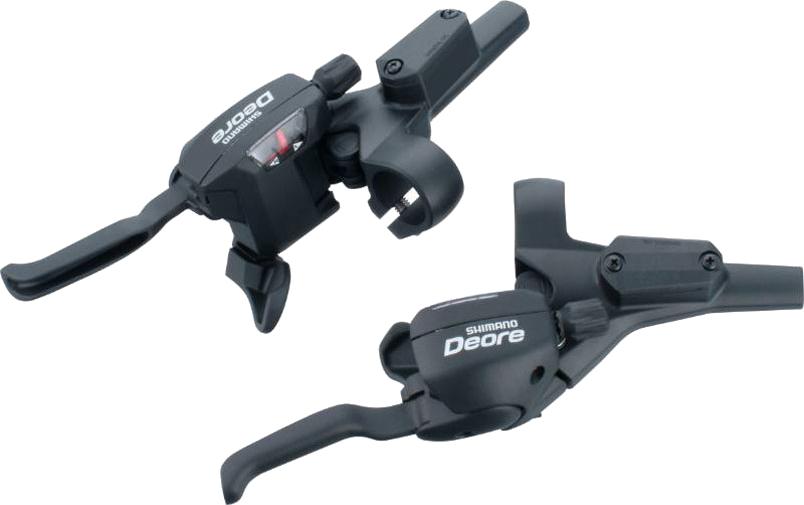
Add new comment
92 comments
Campagnolo Powertorque deinstallation is show in this official campagnolo video on youtube:
https://www.youtube.com/watch?v=L1_3smRyk-w&feature=youtu.be&t=132
Campag Delta's......... Sexier than that Scully from X-Files and she was fit!
Anyone else had the annoyance of grinding down a 4mm Allen key?
SPD-R pedals: Had a pair of Dura-Ace ones, bought after Shimano stopped paying for the Look patent. used them once and gave them away, along with the carbon Dura-Ace level shoes I had to buy .
Biopace: Well it worked (sort of), if you moved the chainring one bolt forward on the chainset.
Early STI's: Cheers Shimano for having to throw away a pair of Dura-Ace 9-speed ones as Madison didn't bring in the tiny part that broke. Still have a pair from 1993 that work.
No mention of Shimano 10-speed STI's where the gear cable goes under the bartape. This was rushed into production due to Campag and never really worked well unless you were prepared to run the gear outers 'behind' the bar and cross them on the down-tube stops. Bugger, giving away trade secrets.
Suprised the Shimano RSX groupset isn't mentioned along with the MJ groupset. RSX featured a 'compact' chainset (which flopped) and the MJ groupset was intended for kids bikes. It was way ahead of it's time.
MTB STI levers went down well in Europe where cross-country racing is massive. The 'rapid-rise' rear mech was OK until the spring weakened. It was a total pain to set gears up if you were not used to it.
Positron not mentioned, it actually worked pretty well for a cheap version of indexing. Finding a place that sold piano wire was interesting.
Campag TI B/B: OK a pile of crap, but not as bad as the creaky Hope one of old that was impossible to silence.
Actually, on the subject of Campag brakes: Could anyone actually brake from the hoods on '80's brake lever unless they had the hands and finger muscles of Geoff Capes?
Campag did have a go at BMX as well as MTB stuff. Shame they stopped making rims as I have got a few pairs of wheels built with Lamda and Omega rims.
1980's brakes - i doubt it, levers where really bad and ergonomics was shitty which was why servo brakes like CLB2 centerpuls had a decent market - you could use them to stop from the hoods but you'd have to be really carefull not to lock up your wheel.
If you open the 1988 Campy levers quickrelease ypu could use the athena to to brake controlled from the hoods - but they do need a lot of power which is dificult to apply from the hoods.
Shinanos 600Ultegra & DureAce 7400 levers was a huge improvent. I Used the 600 Ultegras with a pair of Mavic 440's (modolo OEM), you could brake those from the of of the lever, however modulation was not nearly as good as the Athena's, neither was max brake power. But they worked ok without applying huge amount of power throug the levers 'funny'.
I actually decended from vesuvio in october with those Athena 1988 brakes with original 27years old brake rubber. Very confident....
Rim's.... those Campy V-profile rims are still some of the best rims out there i you can find the NOS with the correct number of holes. I had a pair of Omega-V clinchers in 1988 and build a pair of Seoul tubulars a 2-3 years ago on a set of shiny Chorus OS hubs from 1999 - they are lovely - lightweight, stiff, strong and very easy to build on with Sapim Race spokes and polyax brass nipples. Weigth endned up at sub 1500g and the y ride like nothing else when paired with a 27mm Pave tub - and quite decent on a sprinter gatorskins. I actually toured the Pyranees in 2014 and the Dolomites in 2015 on that wheelset.
Great article by the way
I'd never use Power Torque again after having to write off a Centaur Red crankset last year by literally beating the f*cker out of the frame with a hammer after shearing the ends off of the Park Tools puller.
If you only ever ride in the dry then it's no problem, you can even just tap the crank out with a rubber mallet in that case but once a bit of moisture gets in there - no chance!
Quite, PT really is pants (and I'm a massive Campag fan, would normally support any design they come up with). First thing I did on my Rose when it was delivered was get the PT Athena chainset off and replaced with new press-fit BB cups that would take an Ultra-Torque chainset. One carbon Chorus chainset later and everything was as it should be
I agree with an earlier poster that the bearings in a UT chainset aren't great, but they're not expensive to replace and at least you can get at the bloody things.
Power Torque is bonkers. But Ultra Torque... wonderful!
PT is indeed complete cack. Not looking forward to having to replace the bearings on mine.
UT much better - at least it's easy to get the cranks on and off - but the bearings are also rubbish. Have replaced mine with Boca yellows and now need much, much less looking after
UT and their berrings are exelent, i've managed run my 1.gen UT Chorus for +8 years and +70000km in scandinavian weather without any maintence. Retired the crank last year for a new UT Chorus 2015. Right side bearing is fine and still without any play, it needs to be regreased though. Left side bearing has play and needs replacement. If had cleaned and regreased it a year before it would still have been rolling as new. (you'd need a wd40 like spray solvent + a simple greasegun to regrease UT bearings)
I only changed the cranset because a new bearring, a bearing puller/workshop cost + two new chainrings would cost me approx 1500 dkr and i found an ebay.de bargin at approx 2000 dkr for an almost unused 2015 crankset sold by a dude who had regretted his chose chainring /armlength choise.
UT just needs a 100% faced and alligned BB for the cups. If installed correctly and your frames BB tolerances is within specs UT stainless steel bearings will outlast any modern crank with external bearings.
reg BB tolerances a cheap china carbon frame might not be ideal - i have a custom handbuild Merlin Works TI CR3/2.5 from 2006 though, everything is dead straight and finished like no other TI manufacture expet Seven/Spectrum. Cost for a frame like that is high though, i think i payed3500€ incl VAT for the frame back in 2006. A similar frameset from Seven or Spectrum would cost 5000$ in 2016 mony... + overseas postage + EU VAT+import tax.
Agree, Ultra Torque never give me problems if fitted correctly.
B-b-b-b-but you need a bearing puller to... err... change the bearings! And a 10mm hex bit (as found in every socket set known to man) to remove the cranks! And it doesn't work on frames with out of spec bottom brackets! Awful system!
</sarc>
I have the Sora-style thumb shifters on my road bike and I love them. Especially for touring-style rides and commuting. I don't spend a lot of time on the drops during those rides so I don't miss being able to shift from there. And the thumb switches are easily accessible and work well with big gloves on in winter.
They only have a place on this list if you are being a snob about your shifting options.
agreed. Sora-style STI shifters are the best for cold weather winter commuting, much easier to use than the newer style paddle shifters with bulky glives on. They have their place.
I have to disagree there. I could never get my thickly gloved fingers onto the button without interference from the shift cable. They were comfortably shaped hoods though - nice and compact.
John, you're trying hard to make the jump from MTB-er to roadie, but you lack basic knowledge.
The campag Ti axle broke on Fignon during minor French classis Bloise-Chaville. He had problems with helicopters in the Giro ....
Quite correct. Here is is
https://www.youtube.com/watch?v=YeNU2HM6iOY
Blois-Chaville is effectively Paris-Tours. Just honestly named. An important minor classic.
I have 2007-vintage Campag Centaur Ergo levers and the thumbie is fine for me, even with my small hands - probably got relatively shallow drops, perhaps. It is pleasing to see, however, that Campag have re-engineered it with the advent of the electronic changers.
As for the Sora levers - ugh - I purchased these for my winter bike and was blissfully unaware that they are clearly designed, as suggested already, by some sort of alien. I simply cannot change from the drops at all. They will probably find there way onto a Bonfire Night pyre at some stage.
<cite>Even now it’s hard to imagine even Shimano forcing through a change to the pedal mount — it’s the last true standard in bike parts.</cite>
Not quite the last; there's still the half-inch chain pitch, thank goodness! You didn't include it but I seem to remember Shimano attempting to introduce a 10mm chain pitch in the late '80s. That didn't take off either...
The design of the Dura Ace AX pedals has nothing at all to do with wanting to lower centre of gravity. The whole gruppo was designed for aerodynamics - hence the aero seatpin, concealed bolt stem and of course the AX parapull brakes.
Having a single large inboard bearing on the pedal not only reduced frontal area but also reduced to zero the axle to sole measurement, eliminating rocking torque, a goal many pedals have attempted since, and which you actually mention as the advantage of the SPD-R. With the AX pedal the sole of the shoe is actually on the centre of rotation.
Talking of pedal standards, in 1981 when the AX group came out lots of bikes were French, who of course had their own pedal thread standard. There was no standard then.
Re Campag SGR pedals - ask John Tanner about his during the 1989 Ras Tailtean. He was yellow jersey when his SGRs decided to stop rotating. I lost track of how many bike changes he had that day.
Seems the new Potenza groupset finally has a self-extracting bolt to solve the PowerTorque problem... hope it is extended to the other low end groups.
PT has such a reputation I searched for ages for an older UltraTorque Athena 11 speed crank - 2009-10 only - to go with the rest of the 11 speed Athena group.
I've got the dual control mtb levers. Really not that bad.
Agreed. I liked em.
If you want a MTB real fail, look no further than HAYES 9. Utter *****
Good grief, are you ok? I hope your Scrouge condition gets better. Dual control levers could only be liked by someone too tight to buy something that works.
My candidate: Shimano STI shifters.
Expensive consumables that you need to bin because a small single part snapped/wore out and you can't replace it.
I lusted after those Campag Deltas.
Sadly Campags weird accessories and non standard tools put me off buying the groupset and I've gone away from the brand - but man they look lovely.
My Centaur BB has been in place for almost four years and, fingers crossed, it has required precisely no maintenance. But I have been planning for the day when the thing has to be removed and I bought a £4:99 puller from our local car accessory shop. A little careful slimming of the three 'feet' with a grinder and it seems to be a snug fit. All I need now is an excuse to use it.
Having tried to remove my Campagnolo Centaur Carbon Chainset at the weekend I can confirm what a sh!t design power torque is.
Im using the official park tool which has already snapped once when removing my older now sold veloce groupset. On this effort it chipped my carbon crank!!!! hence it is staying on and will be someone elses problem when the bike is sold at some point.
Paul Calf , Bag Of Shite springs to mind.
Still love campy........Chorus groupo knocks spots off ultegra on my cross bike.
I've never seen a Delta but the cable 'issue' doesn't sound any different to tririg omegas and the interweb isn't full of complaints about that. Too long and the cable end rubs the tyre, too short and you can't get the clamp onto it. Deltas look fab.
Very interesting article - well worth a read.
Pages